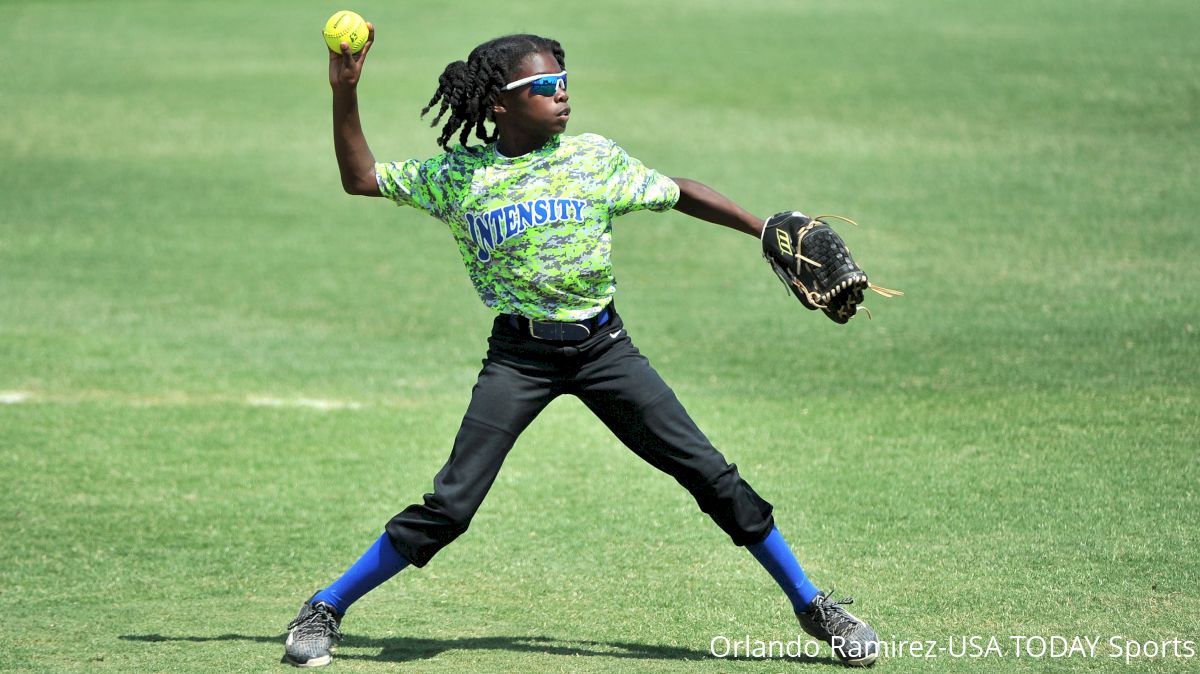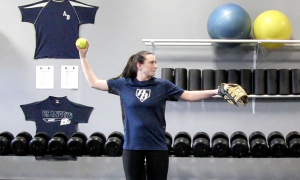3 Throwing Drills That Must Come to an End
3 Throwing Drills That Must Come to an End
Put one knee down, elbow at 90°, ready, aim, flick. We've all done this age old drill. It's easy. It was a drill that we were taught. Most coaches don't hav

Put one knee down, elbow at 90°, ready, aim, flick. We've all done this age old drill. It's easy. It was a drill that we were taught.
Most coaches don't have the time or energy to research movement patterns and mechanics of throwing.
That's why we asked throwing expert Austin Wasserman to talk about common throwing drills that should be eliminated from warm ups. He also offers helpful tips on what you should be implementing in your throwing routine.
Proper backspin can be taught with arm pathway training without having to do the Wrist Flick drill.
Pure wrist flexion doesn't occur in a throw. So there's no reason to train a dart motion designed for pure wrist flexion. Read more

Most athletes are visual or kinesthetic learners. When showing them or putting them into this L position, they can repeat that position fairly efficiently but that's not how the throw occurs in real time.
The problem is teaching a position, instead of movement THROUGH a position. This positional throw does not create efficient movement through ball release.
Using the term "get here" describes a point in which the athlete needs to get to, either with the arm or the body, but that isn't the goal.
The goal is to release the ball efficiently, with velocity, proper timing and with no pain, in order to make a play.
More info on throwing and Austin Wasserman. For questions on throwing tweet @Wass_Strength!
Most coaches don't have the time or energy to research movement patterns and mechanics of throwing.
That's why we asked throwing expert Austin Wasserman to talk about common throwing drills that should be eliminated from warm ups. He also offers helpful tips on what you should be implementing in your throwing routine.
1. Wrist Flicks
One of the most recognized drills is the Wrist Flick. This drill aims to teach proper "backspin" on the ball.Proper backspin can be taught with arm pathway training without having to do the Wrist Flick drill.
Pure wrist flexion doesn't occur in a throw. So there's no reason to train a dart motion designed for pure wrist flexion. Read more
2. L-Drill
The L-Drill teaches a position, not a movement THROUGH a position. That is the biggest flaw with this drill.
Most athletes are visual or kinesthetic learners. When showing them or putting them into this L position, they can repeat that position fairly efficiently but that's not how the throw occurs in real time.
The problem is teaching a position, instead of movement THROUGH a position. This positional throw does not create efficient movement through ball release.
3. Robotic Pauses & Cues
Robotic pauses and cues make athletes robotic. It teaches them positional points rather than how to move THROUGH positions.Using the term "get here" describes a point in which the athlete needs to get to, either with the arm or the body, but that isn't the goal.
The goal is to release the ball efficiently, with velocity, proper timing and with no pain, in order to make a play.
What should you do instead?
1. Implement better pre-throwing routines
This includes Scapular Upward Rotation Drills, J-Band Series Exercises, High Level Throwing Pattern progressions and Long Toss! Wasserman's Dynamic Warm Up2. Arm Behind Variations & Progressions
The Arm Behind Variation drills and progressions teach scapular upward rotation, pronation through ball release, enhances the hip to trunk relationship while strengthening the arm THROUGH coordination and movements.3. Be an Athlete
Let your athletes step outside the confines of technique drilling and add in fun throwing competitions.More info on throwing and Austin Wasserman. For questions on throwing tweet @Wass_Strength!